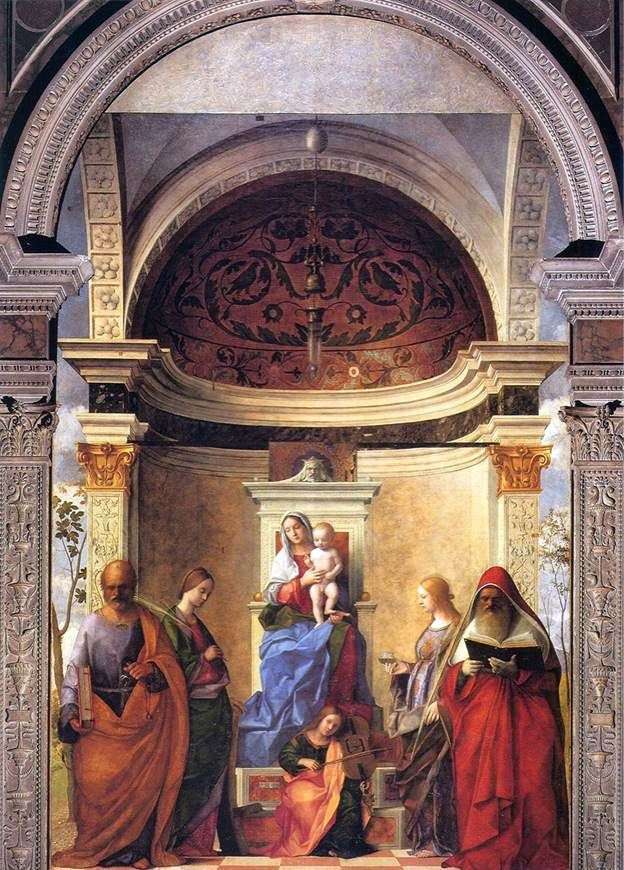
The great altar of Bellini’s work for the chapel in the north wing of the church of San Zaccaria in Venice was made in 1505. A similar composition – the Holy Virgin and the Child on his knees and saints, usually four or six, on both sides of it, known as the Holy Interview – creates more cozy, cordial atmosphere than the solemn theme of Maesta, and enjoyed success with Venetian Renaissance artists.
The picture shows the Holy Virgin, bathed in golden aurora, sitting with the Infant in her arms on the dais, in the depths of the high eksedra. Neither the Holy Virgin nor the Child looks at the viewer, immersed in their thoughts, the uplifted hand of the Child resembles a gesture of blessing.
Heads of St. Peter and St. Hieronymus is slightly inclined, and the look is thoughtful. Two saints – Catherine of Alexandria and Lucia – are also immersed in meditation. Only the sight of the music-making angel, directed to the distance, invites the viewer to join the scene of calm contemplation. IMAGES OF THE SAINT VIRGIN. The hypostasis of the Virgin Mary as the mother of Christ is the main doctrine of the church, in its image motherhood is often emphasized. As the genealogical tree of Christ, leading from Jesse, shows, his kinship with David’s father is in the line of the Holy Virgin, and not of Joseph.
The most striking is the image of the mother in scenes where the Holy Virgin feeds the infant of Christ with the breast; This story the artists wrote down to the Trent Cathedral, when it was expressed disapproval of depicting the Holy Virgin naked. In the Renaissance, the Virgin was often depicted in a home interior or against a background of a realistic landscape; sometimes she was dressed in fashionable clothes of that time.
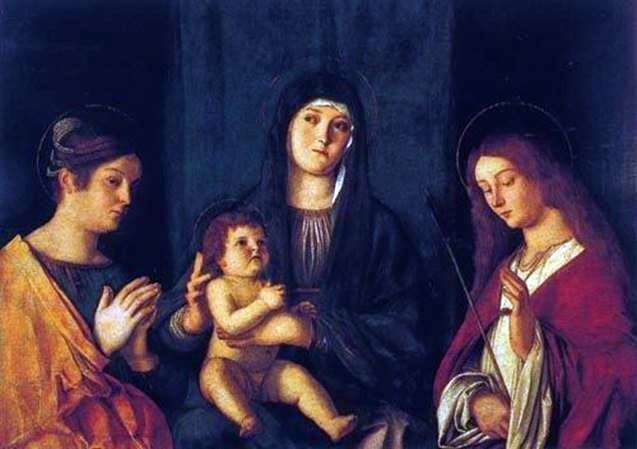 Madonna with the Child, Saint Catherine and Saint Ursula by Giovanni Bellini
Madonna with the Child, Saint Catherine and Saint Ursula by Giovanni Bellini Madonna with Child and Saints by Angelico Fra
Madonna with Child and Saints by Angelico Fra Madonna and Child, surrounded by angels, with Saints Frediano and Augustine by Filippo Lippi
Madonna and Child, surrounded by angels, with Saints Frediano and Augustine by Filippo Lippi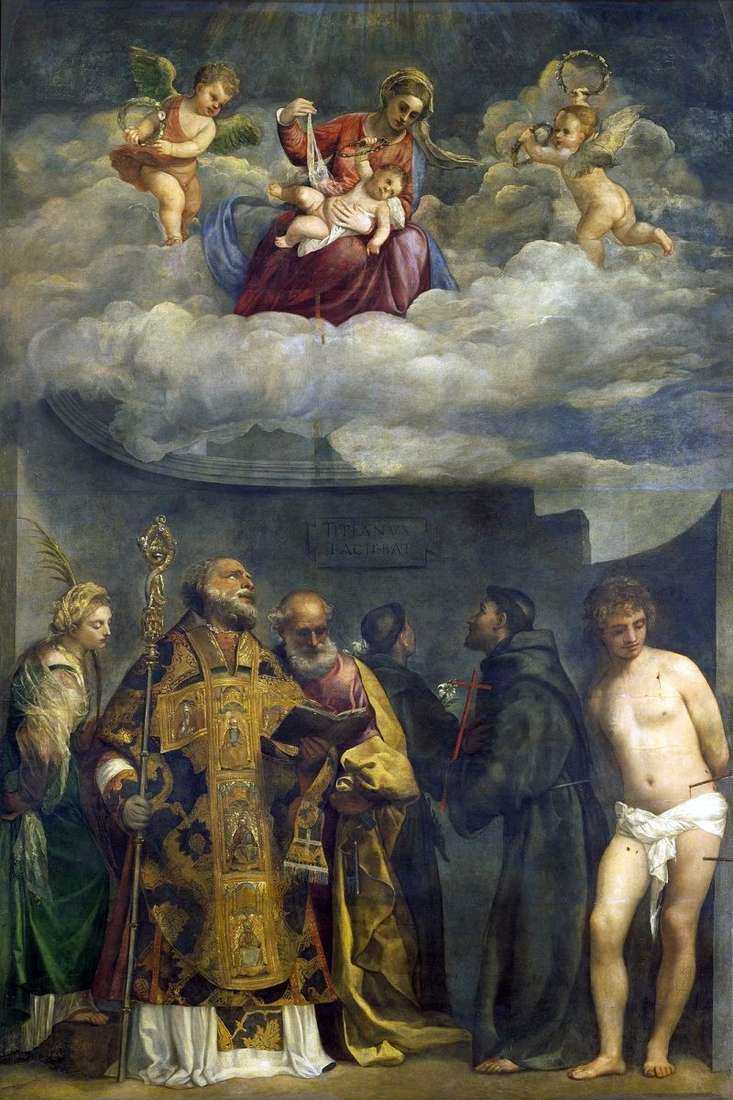 Madonna and Child and Saints by Titian Vecellio
Madonna and Child and Saints by Titian Vecellio Madonna with the Child and Saint Anna by Leonardo da Vinci
Madonna with the Child and Saint Anna by Leonardo da Vinci Madonna and Child and Saints by Vittore Carpaccio
Madonna and Child and Saints by Vittore Carpaccio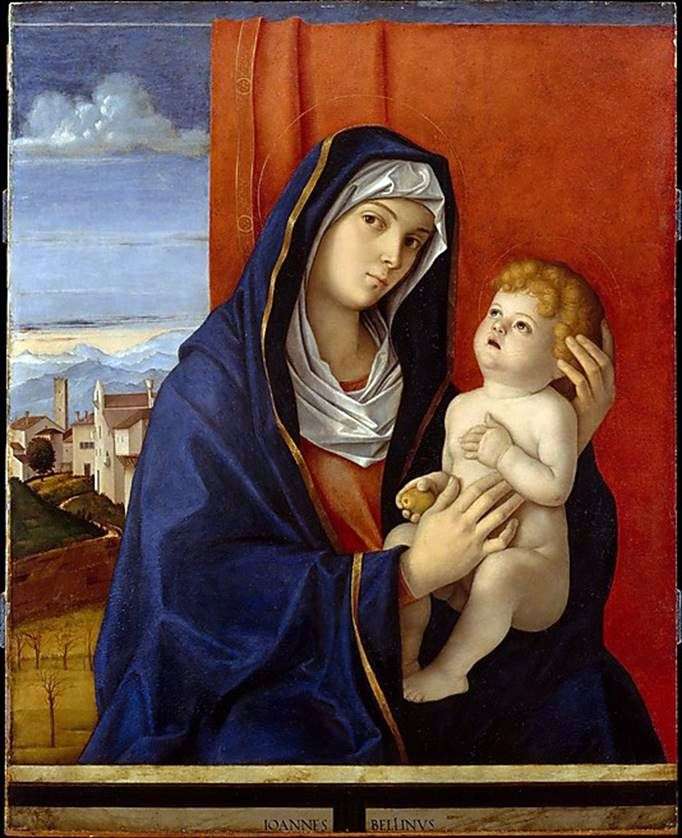 Madonna and Child by Giovanni Bellini
Madonna and Child by Giovanni Bellini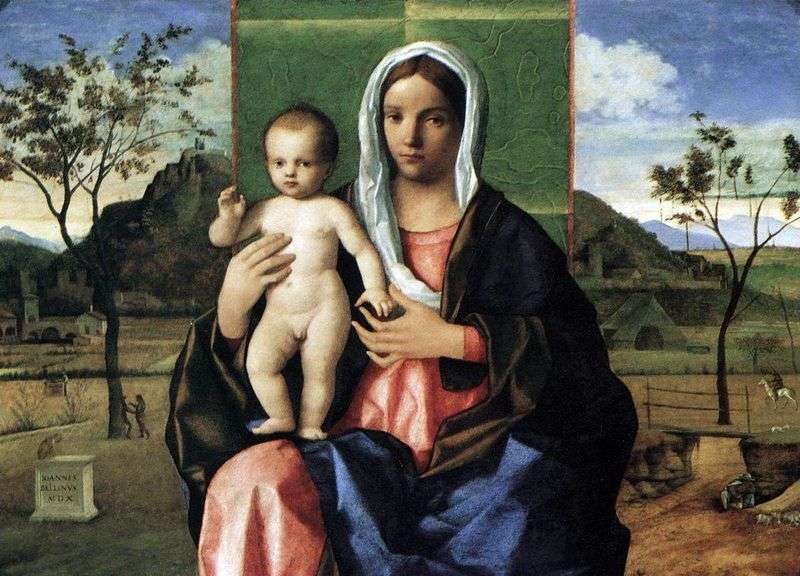 Madonna and baby with a blessing by Giovanni Bellini
Madonna and baby with a blessing by Giovanni Bellini